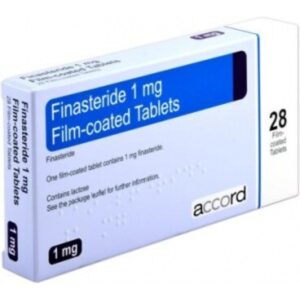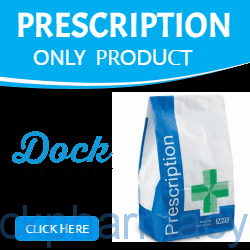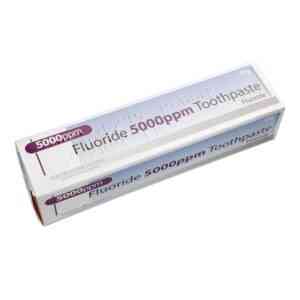Description
Malarone Paediatric Tablets Pack of 12 Tablets
Malarone paediatric tablets contain a fixed dose combination of atovaquone and proguanil hydrochloride. Each tablet contains 62.5 mg atovaquone and 25 mg proguanil hydrochloride.
Use for treatment and prophylaxis of malaria in children.
How to Use
Give Malarone Paediatric with food or a milky drink, where possible. The tablets should be swallowed
whole. However, for children who find them difficult to swallow, they may be crushed just before
being taken and mixed with food or a milky drink.
It is best to give Malarone Paediatric at the same time each day
If your child is sick (vomits)
For preventing malaria:
if your child is sick (vomits) within 1 hour of taking Malarone Paediatric, give another dose
straight away
it is important to take the full course of Malarone Paediatric. If your child has to take extra
tablets due to sickness, they may need another prescription.
if your child has been vomiting, it is especially important to use extra protection, such as
repellents and bednets. Malarone Paediatric may not be as effective, as the amount absorbed will
be reduced.
For treating malaria:
if your child has vomiting and diarrhoea tell your doctor. Your child will need regular blood
tests. Malarone Paediatric will not be as effective, as the amount absorbed will be reduced. The
tests will check whether the malaria parasite is being cleared from their blood.
To prevent malaria
The recommended dose to prevent malaria depends on your child’s weight.
11-20 kg – 1 tablet once a day
21-30 kg – 2 tablets once a day (as a single dose)
31-40 kg – 3 tablets once a day (as a single dose)
Start giving Malarone Paediatric 1 to 2 days before travelling to an area which has malaria
Continue giving it every day during the stay
Continue giving it for another 7 days after your return to a malaria-free area.
For maximum protection your child must take the full course of treatment.
Patient Information Leaflets
Warning
Do not give Malarone Paediatric:
if your child is allergic to atovaquone, proguanil hydrochloride or any of the ingredients of this
medicine (listed in Section 6).
for preventing malaria, if your child has severe kidney disease.
Tell your doctor if either of these apply to your child.
Take special care with Malarone Paediatric
Talk to your doctor or pharmacist before you give Malarone Paediatric to your child if:
your child has severe kidney disease
your child is being treated for Malaria and weighs less than 5 kg or is given Malarone Paediatric
to prevent Malaria and weighs less than 11 kg.
Tell your doctor or pharmacist if any of these applies to your child.
Other medicines and Malarone Paediatric
Tell your doctor or pharmacist if your child is taking, have recently taken or might take any other
medicines, including medicines bought without a prescription.
Some medicines can affect the way Malarone Paediatric works, or Malarone Paediatric itself can
strengthen or weaken the effectiveness of other medicines taken at the same time. These include:
metoclopramide, used to treat nausea and vomiting
the antibiotics, tetracycline, rifampicin and rifabutin
efavirenz or certain highly active protease-inhibitors used to treat HIV
warfarin and other medicines that stop blood clotting
etoposide used to treat cancer.
Tell your doctor if your child is taking any of these. Your doctor may decide that Malarone
Paediatric isn’t suitable for them, or that they need extra check ups while taking it.
Remember to tell your doctor if your child starts taking any other medicines while they’re
taking Malarone Paediatric.
Malarone Paediatric with food and drink
Give Malarone Paediatric with food or a milky drink, where possible. This will increase the
amount of Malarone your child’s body can absorb, and make the treatment more effective.
Pregnancy and breast-feeding
If you or your child is pregnant, do not take Malarone Paediatric unless your doctor recommends
it.
Do not breast-feed while taking Malarone Paediatric tablets, as the ingredients may pass into
breast milk and may harm your baby.
Driving and using machines
If you feel dizzy, do not drive. Malarone Paediatric makes some people feel dizzy. If this happens to
you, do not drive, use machines or take part in activities where you may put yourself or others at risk.
Side Effects
Malarone Paediatric side effects
Like all medicines, this medicine can cause side effects, although not everybody gets them.
Look out for the following severe reactions. They have occurred in a small number of people, but
their exact frequency is unknown.
Severe allergic reactions – signs include:
rash and itching
sudden wheezing, tightness of the chest or throat, or difficulty breathing
swollen eyelids, face, lips, tongue or other part of the body.
Contact a doctor immediately if your child gets any of these symptoms. Stop giving Malarone Paediatric.
Severe skin reactions
skin rash which may blister and looks like small targets (central dark spots, surrounded by paler
area with a dark ring around the edge) (erythema multiforme)
severe widespread rash with blisters and peeling skin, particularly occurring around the mouth,
nose, eyes and genitals (Stevens-Johnson syndrome).
If you notice any of these symptoms contact a doctor urgently.
Most of the other side effects reported have been mild and have not lasted very long:
Very common side effects
These may affect more than 1 in 10 people:
headache
feeling sick and being sick (nausea and vomiting)
stomach pain
diarrhoea.
Common side effects
These may affect up to 1 in 10 people:
dizziness
sleeping problems (insomnia)
strange dreams
depression
loss of appetite
fever
rash which may be itchy
cough.
Common side effects which may show up in blood tests are:
reduced numbers of red blood cells (anaemia) which can cause tiredness, headaches and
shortness of breath
reduced numbers of white blood cells (neutropenia) which may make you more likely to catch
infections
low levels of sodium in the blood (hyponatraemia)
an increase in liver enzymes.
Uncommon side effects
These may affect up to 1 in 100 people:
anxiety
an unusual awareness of abnormal beating of the heart (palpitations)
swelling and redness of the mouth
hair loss
itchy, bumpy rash (hives).
Uncommon side effects that might show up in blood tests:
an increase in amylase (an enzyme produced in the pancreas)
Rare side effects
These may affect up to 1 in 1,000 people:
seeing or hearing things that are not there (hallucinations)
Other side effects
Other side effects have occurred in a small number of people but their exact frequency is unknown.
Inflammation of the liver (hepatitis)
blockage of bile ducts (cholestatis)
increased heart rate (tachycardia)
inflammation of the blood vessels (vasculitis) which may be visible as red or purple raised spots on the skin, but can affect other parts of the body
fits (seizures)
panic attacks, crying
nightmares
severe mental health problem in which the person loses contact with reality and is unable to think
and judge clearly
indigestion
mouth ulcers
blisters
peeling skin
increased sensitivity of the skin to sunlight
Only logged in customers who have purchased this product may leave a review.
 +44 (0) 1375 846 316
+44 (0) 1375 846 316



Reviews
There are no reviews yet